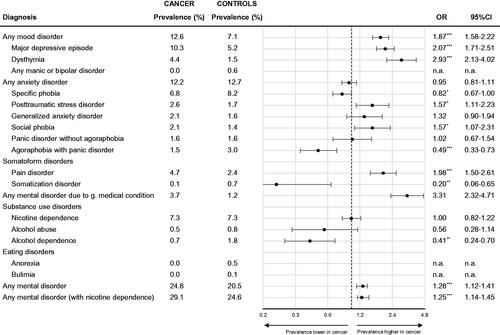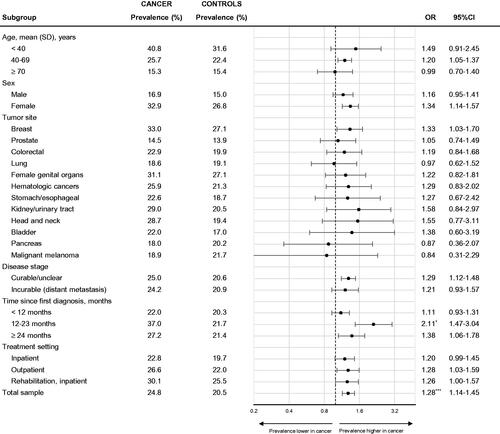Figures & data
Table 1. Demographic and disease-related characteristics of the cancer sample, unweighted (n = 2141).
Figure 1. Comparison of mental disorder prevalence rates in patients with cancer (n = 2141) vs. age and gender-matched general population controls (n = 4483). Prevalence rates in controls were weighted based on propensity score-matching. Matching accounted for age, gender, and age × gender interaction. 12-month-prevalence rates were assessed. *p < .05, **p < .01, and ***p < .001.

Figure 2. Prevalence rates for any mental disorder (without nicotine dependence) in patients with cancer vs. age and gender-matched controls by demographic and disease-related subgroups. Each medical subgroup (e.g., breast cancer) is compared with accordingly matched non-cancer controls, i.e., breast cancer patients (left column) are compared with female controls of matching age (right column). Prevalence rates in controls were weighted based on propensity score-matching. Matching accounted for age, gender, and age × gender interaction. 12-month-prevalence rates were assessed. *p < .05, **p < .01, and ***p < .001.

Supplemental Material
Download MS Word (848.7 KB)Data availability statement
The data that support the findings of this study are available from the corresponding author upon reasonable request.
